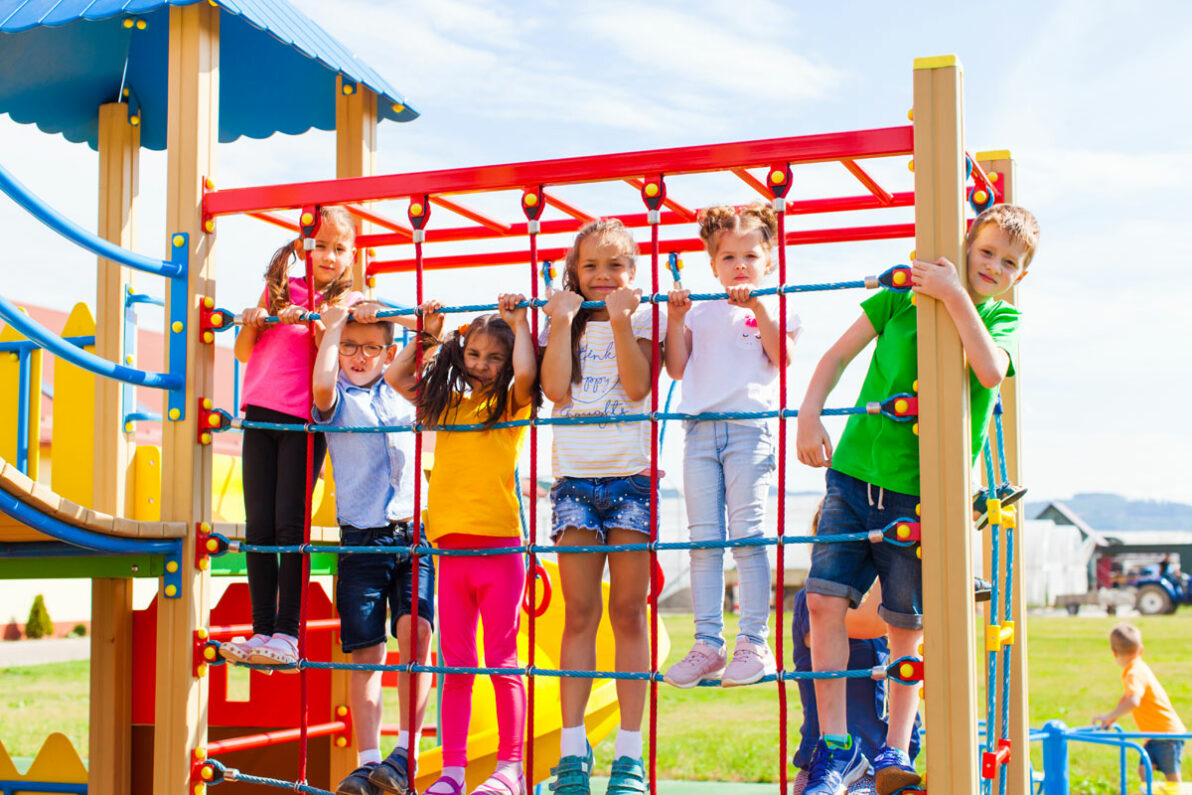Blog
Why Color Matters in Children’s Environments

At 6 months of age, play becomes something more than just movement for a baby, they begin learning from their environment and interactions. Two months later, babies’ eyes develop and they start seeing color. This is life changing, even if they can’t say it in words. After this stage, color plays a big role in learning and development. Think of how many times, even as an adult, that we use color to differentiate between objects we are identifying. Do colors not still have the ability to delight and interest us every day? This is why a child’s introduction to color is so important. Incorporating color into play is the easiest way to aid childhood development into this visual world.
You have probably heard the phrase that a child’s brain is “like a sponge” and that is absolutely true. They are drinking in their environment and learning from everything they encounter. This is a sure sign that they are an empty sponge when they are young. All of what we have as an adult of “common knowledge” has yet to be learned. For example, red lights and green lights help us navigate our cars on the road. Red is also used to denote hazard, heat or danger. These are learned associations. Children have to be taught these connections that we see and interpret every day.
Incorporating color into play means that a child is learning something useful while also stimulating their senses and enjoyment. At this early age, before children learn verbal cues, they are more likely to memorize and remember colors. When you are playing a simple retrieving game, asking for the “red block” will give the child an easy indicator of what to look for and then they will associate the object they find with both “red” AND “block.” And because of the vast number of colors we can see visually, primary colors are only the beginning of learning. After a child masters ROYGBIV, they can begin to explore more subtle shades like lilac, crimson and teal.
Color also has the ability to affect mood in both children and adults. There are simple associations you may already know like yellow being related to happiness and blue being related to sadness. There are also deeper, scientific reactions happening when we interact with color and some of them have very specific effects. One study by Hape.com delves into the effects of the more common colors: “Blue increases productivity. Cool hues cause the body to produce calming chemicals. Red stimulates brain activity. But if overused, it can be very distracting and often triggers hunger. Green is very relaxing and is associated with nature, creativity and fertile thinking. Yellow heightens concentration, but it also can be very overpowering.” Knowing this as adults means we can have a positive effect on childhood development by bringing more productive or calming colors into a child’s environment.
At Southeast Outdoor Solutions, we specialize in offering more than just play, we want to aid in childhood development. We believe that play and learning belong everywhere; at school, at church, in daycare, even when you are strolling in a city park. Children are constantly learning and we can help make their environment even more stimulating. Our parks and playgrounds engage the senses with vibrant colors, noise elements, and moving parts to develop hand-eye-coordination. The perfect place for one of our parks is anywhere you have room!
Reach out to our team today to upgrade the learning experience for the children at your school, church, daycare or park.